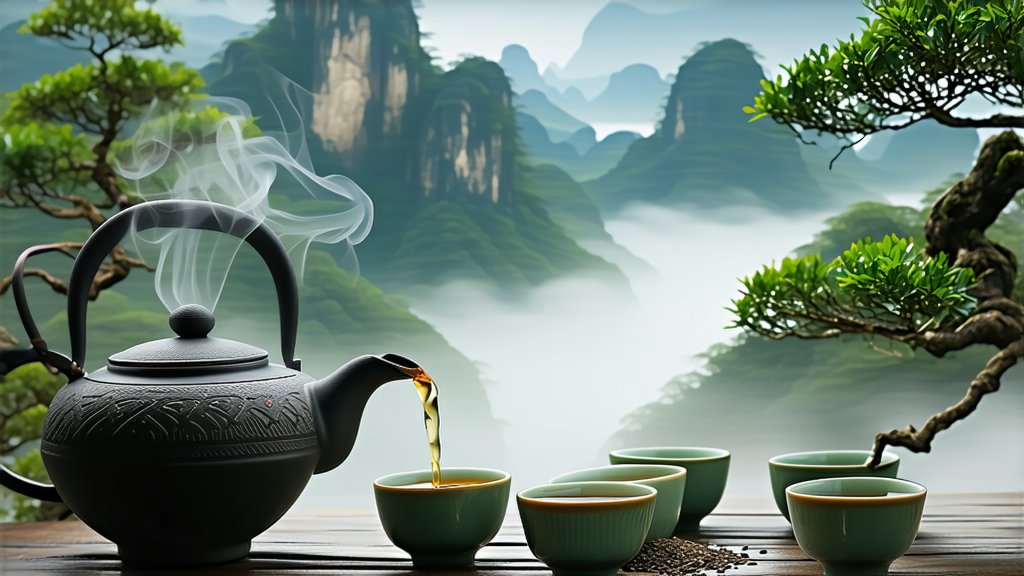
Pu-erh tea, a captivating variety within the Chinese dark tea family, holds a revered position in the world of tea enthusiasts. Originating from the Yunnan province, this unique tea has been cherished for centuries due to its complex flavors, potential health benefits, and the intriguing transformation it undergoes over time. In this exploration, we delve into the rich history, diverse types, intricate production process, and art of appreciating Pu-erh tea.
Historical Roots and Evolution
The origins of Pu-erh tea can be traced back to the ancient Tea Horse Road, a trade route that connected Yunnan with Tibet and other regions. It is said that during these long journeys, tea leaves would compress into bricks for easier transportation. The natural fermentation process that occurred along the way due to humidity and heat gave birth to what we now know as Pu-erh tea. Its popularity soared during the Ming Dynasty, making it a sought-after commodity among Chinese emperors and common folk alike.
Types of Pu-erh Tea: Sheng vs. Shou
Pu-erh tea comes in two primary forms: Sheng (raw) and Shou (ripe). Each type offers distinct characteristics and aging potential.
-
Sheng Pu-erh: Made from sun-dried maocha (partially oxidized tea leaves), Sheng Pu-erh undergoes natural fermentation over time. This process can span several years, leading to a gradual mellowing of flavors and aromas. Young Sheng Pu-erh is known for its vibrant, astringent taste, while aged versions develop deeper, earthier notes with hints of fruitiness.
-
Shou Pu-erh: In contrast, Shou Pu-erh undergoes a accelerated fermentation process called 'wo dui' or pile fermentation. This involves piling the tea leaves in a humid environment to promote microbial activity, which speeds up the aging process. The result is a smoother, mellower tea with a rich, dark color and a distinctive 'earthy' flavor profile.
The Art of Pu-erh Production
The production of Pu-erh tea is a meticulous craft that involves several stages:
- Picking: Only the top one or two leaves and the bud are selected, ensuring the highest quality.
- Withering: Freshly picked leaves are spread out to lose moisture under the sun.
- Fixation: The withered leaves are briefly heated to stop enzymatic action.
- Rolling: Leaves are rolled into tight spirals to facilitate drying and enhance flavor extraction.
- Sun Drying: Rolls are dried in the sun to reduce moisture content further.
- Aging: For Sheng Pu-erh, this involves storing the tea in controlled environments where it slowly ferments. Shou Pu-erh goes through an additional step of pile fermentation before aging.
Appreciating Pu-erh Tea: A Ritual
To truly savor Pu-erh tea is to engage in a sensory experience. Here's a guide to the traditional Gongfu style of brewing:
- Warm the Pot: Rinse the teapot and cups with hot water to warm them up.
- Measure: Use about 5 grams of tea per 100ml of water for a balanced brew.
- Rinse the Tea: Briefly rinse the tea leaves with boiling water to awaken their flavors and remove any impurities.
- Steep: Pour boiling water over the tea and let it steep for 5-10 seconds for the first infusion. Gradually increase steeping time for subsequent infusions.
- Savor: Observe the tea's color, aroma, and taste. Note how the flavors evolve with each brew.
Pu-erh tea not only delights the palate but also boasts numerous health benefits. Studies suggest it may aid in digestion, boost metabolism, lower cholesterol levels, and even possess anti-aging properties due to its high antioxidant content.
In conclusion, Pu-erh tea embodies the essence of Chinese tea culture—a harmonious blend of tradition, craftsmanship, and nature's bounty. Whether you're drawn to the raw vitality of Sheng or the mature complexity of Shou, exploring Pu-erh tea is a journey that promises endless discovery and enjoyment. As you embark on this tea adventure, remember that patience is key; like fine wine, the best experiences often come with time.